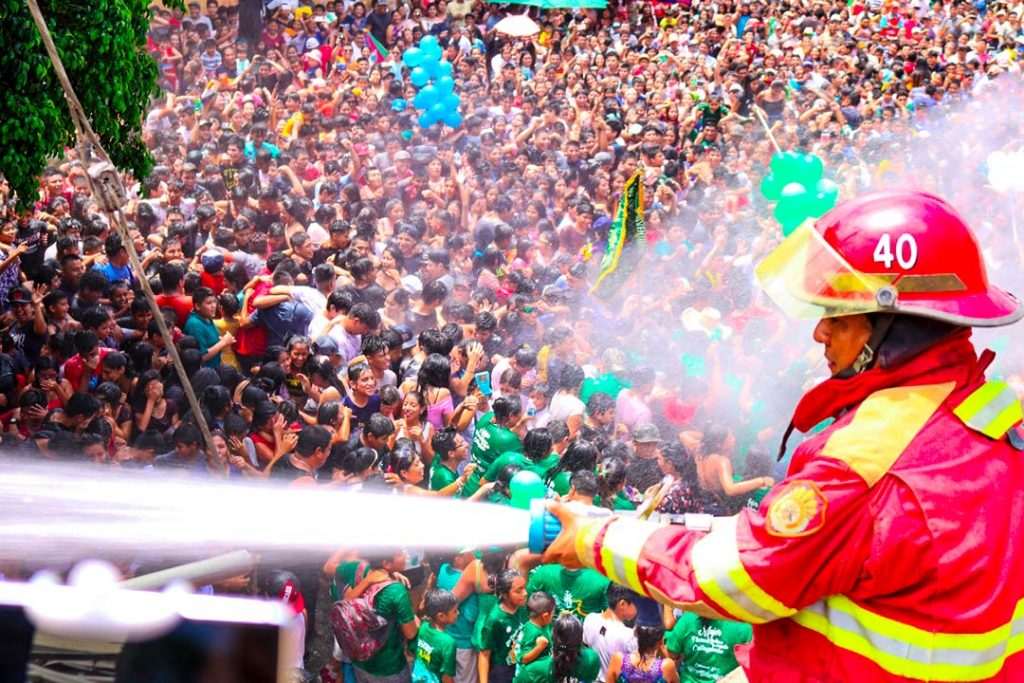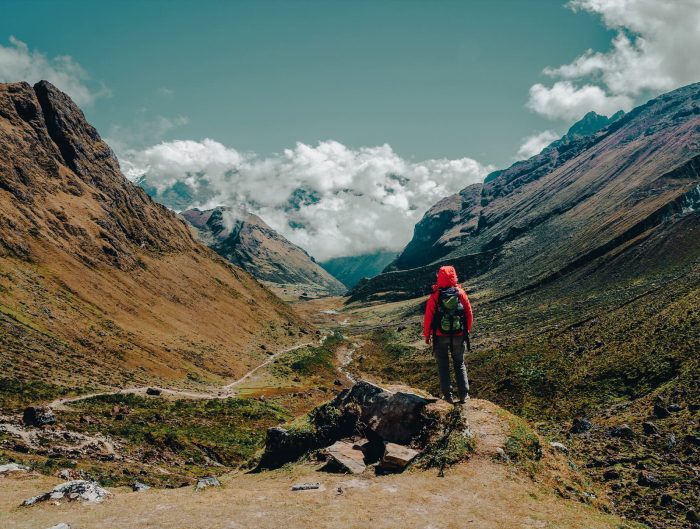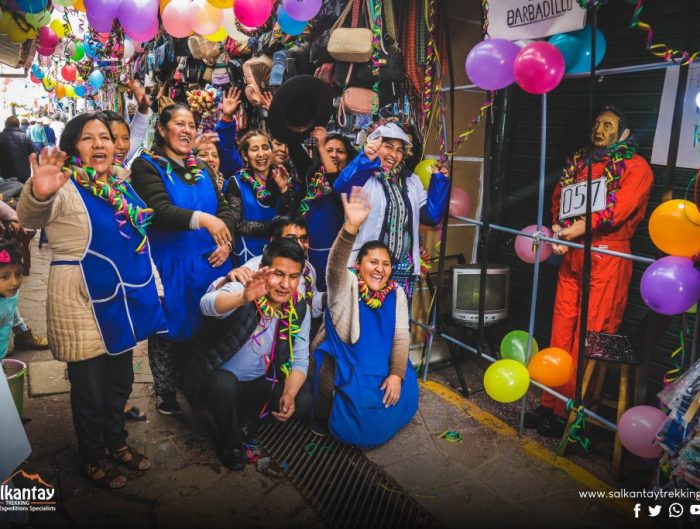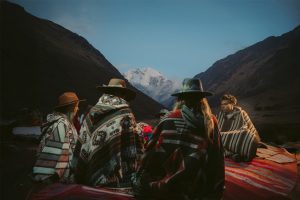Carnivals in Peru are colorful and joyful festivities that celebrate the cultural diversity and traditions of the country. During these events, various communities participate in parades, dances, folk music, and festive activities. Each region of Peru has its own peculiarities in celebrating carnivals, reflecting the richness and cultural diversity of the country.
Peruvian carnivals often include distinctive elements, such as the “water fight,” where people have fun throwing water at each other during the celebrations. Additionally, it is common to see colorful traditional costumes that represent the cultural identity of each region.
These festivities typically take place in different months of the year, depending on the specific region, but overall, carnivals are moments of celebration, community connection, and cultural expression in Peru.
History of Carnivals in Peru
In Peru, the history of carnivals begins with the influence of the first Christians who arrived in our country, who brought their customs from Europe. Usually, human passions were released in these festivities, and joy and uncontrolled reigned.
According to history, since the 19th century, carnivals in Lima have been very flashy and a bit disorderly. Between the 1920s and 1950s, the carnivals became more and more relevant until they became part of the Lima elites. Subsequently, the indigenous people projected their customs onto the carnivals, combining European and indigenous traditions.
What does the celebration of Carnivals consist of?
Each region has its way of celebrating carnivals. Most of them make games with water, filled in buckets and balloons thrown in the street to all who pass by. It is also traditional to use paint, talcum powder, and flour. In addition, the dance groups and music are formed mainly by children and young people who participate in their dance associations.
Why are Carnivals celebrated?
Carnivals are celebrated as a form of homage to Lent’s arrival, where the participants’ behavior must be sober and decorous.
When are Carnivals celebrated in Peru?
Carnivals in Peru are usually celebrated between February and March. They are parties full of joy, music, color, games, and tradition. Currently, it is considered one of the most celebrated festivals in Peru and all of Latin America. The carnivals are characterized by the noise, the parades, and the multicolors that make this party one of the most important in the country.
Where are the Carnivals celebrated in Peru?
Here are the 5 most representative carnivals in Peru that, due to their spectacular nature, concentrate the enthusiasm of many Peruvians and foreigners:
Carnivals in Cajamarca
The city of Cajamarca is known as the Capital of the Peruvian Carnival. Its festivities are very colorful and a great variety of activities are carried out during all the days of the festival. It is one of the most representative, expected and joyful celebrations in Peru.
The city celebrates the arrival of the “Rey Momo” (King Momo), who is received with honors and then veiled and buried. This giant doll represents the “goodbye to bad energies”, so the people of the area celebrate by playing with water, paint and music.
During the days of the festival there are contests of coplas (sung verses), rounds and parades. The allegorical “Corso” is enjoyed and a beauty contest is held among the women of the five neighborhoods of the city to choose the Queen of the Carnival.

Carnivals in Cusco
The carnival in Cusco is one of the great representations of the culture and history of the people. In this festivity the locals express their joy and show their gratitude to the Pachamama or “Mother Earth” with typical dances of the region.
One of the main activities is the gastronomic festival where traditional drinks and dishes such as puchero and thimpu are shown. Water and talc games are also popular.
Also, the popular yunzas are part of the carnival in Cusco, they are trees decorated with gifts and surprises that the locals plant in the center of the party and then tear them down and share the presents.

Carnivals in Ayacucho
The carnival of Ayacucho is part of our National Cultural Heritage in 2003 and is one of the most authentic cultural festivities preserved by the population, it expresses the creativity and sensitivity of the people through urban and rural comparsas.
The festivities begin with the arrival of Ño Carnavalón to the main square, accompanied by different groups that dance to the sound of regional music. The Ayacucho carnival is one of the most authentic and traditional celebrations of the region, where you can enjoy the best carnival in Peru for its songs, dances, music and gastronomy.

Carnivals in Puno (Feast of the Candelaria)
In Puno, carnivals are celebrated with the region’s traditional dances performed by the Puno gangs. Several people fill the city’s main streets to observe the numerous comparsas parading amidst an artistic stage and to venerate the image of the “Mamacha Candelaria,” considered the patron saint of Puno.
In addition to the grand parade and processions, people enjoy the autochthonous dance contests such as the Diablada and the typical dances celebrated during these festivities.

Carnivals of Catacaos
The carnivals in Catacaos, Piura, are one of the most representative of Peru. The celebration begins with the traditional “manguerazo.” A group of firemen sprays jets of water from a platform to the attendees, who celebrate the rhythm of the music.
Thanks to a radiant sun, floats, beautiful dances and colorful streets, the carnival of Catacaos is one of the best experiences in Peru that you should not miss.

The carnivals in Peru keep the essence of our ancestors and celebrate these festivities of tradition, culture, and joy fills us with pride.
Tips for Enjoying Carnivals in Peru
Carnivals in Peru hold the essence of our ancestors, and celebrating these traditions, cultures, and joyful festivities fills us with great pride.
Get ready to experience Carnivals in Peru! Here are some tips to help you make the most of these vibrant and tradition-filled celebrations:
- Research Dates and Locations
Make sure to know the exact dates of the Carnivals in the region you plan to visit. Cajamarca, Puno, and Ayacucho are some of the standout cities, but festivities can vary in each location.
- Wear Comfortable Clothing
Opt for comfortable and light clothing, as celebrations often take place outdoors and may involve physical activities like dancing and parades.
- Sun Protection
Since many events happen during the day, don’t forget to apply sunscreen to protect yourself from the strong Peruvian sun.
- Engage in Water Play with Caution
If you decide to join the popular “water play,” bring clothes you don’t mind getting wet and protect your electronic devices. Also, make sure to respect local rules and avoid soaking people who don’t wish to participate.
- Explore Local Cuisine
Take the opportunity to try the typical dishes of the region. Food stalls during the Carnivals often offer local delicacies that are an integral part of the experience.
- Be Friendly and Open
Carnivals are moments of joy and celebration. Be friendly, interact with locals, and participate in activities to fully immerse yourself in the festive atmosphere.
With these tips, you’ll be ready to experience the joyful atmosphere of Carnivals in Peru and have an unforgettable experience!
Final Part
With the last notes of music resonating in our ears and the glow of colors in our memory, it’s time to bid farewell to this exciting journey through the Carnivals in Peru. From the incredible streets of Cajamarca to the profound spirituality of the Virgen de la Candelaria Festival in Puno, this journey has left us with invaluable memories and a deeper connection to the cultural diversity that adorns these lands.
The refreshing water play has united us in laughter, while ancient traditions have connected us to the authentic roots of this historically rich and colorful land.
As we close this chapter, we carry with us the resonance of music, the pulse of dance, and the palpable energy that characterizes Carnivals in Peru. We appreciate the opportunity to explore and share the richness of these festivities.
As we say goodbye to this blog, we do so with the certainty that the joy and cultural diversity of Carnivals in Peru will linger in our hearts. Until we meet again in the next celebration, may the vibrant essence of these festive moments always light our path. See you soon!














Leave A Reply